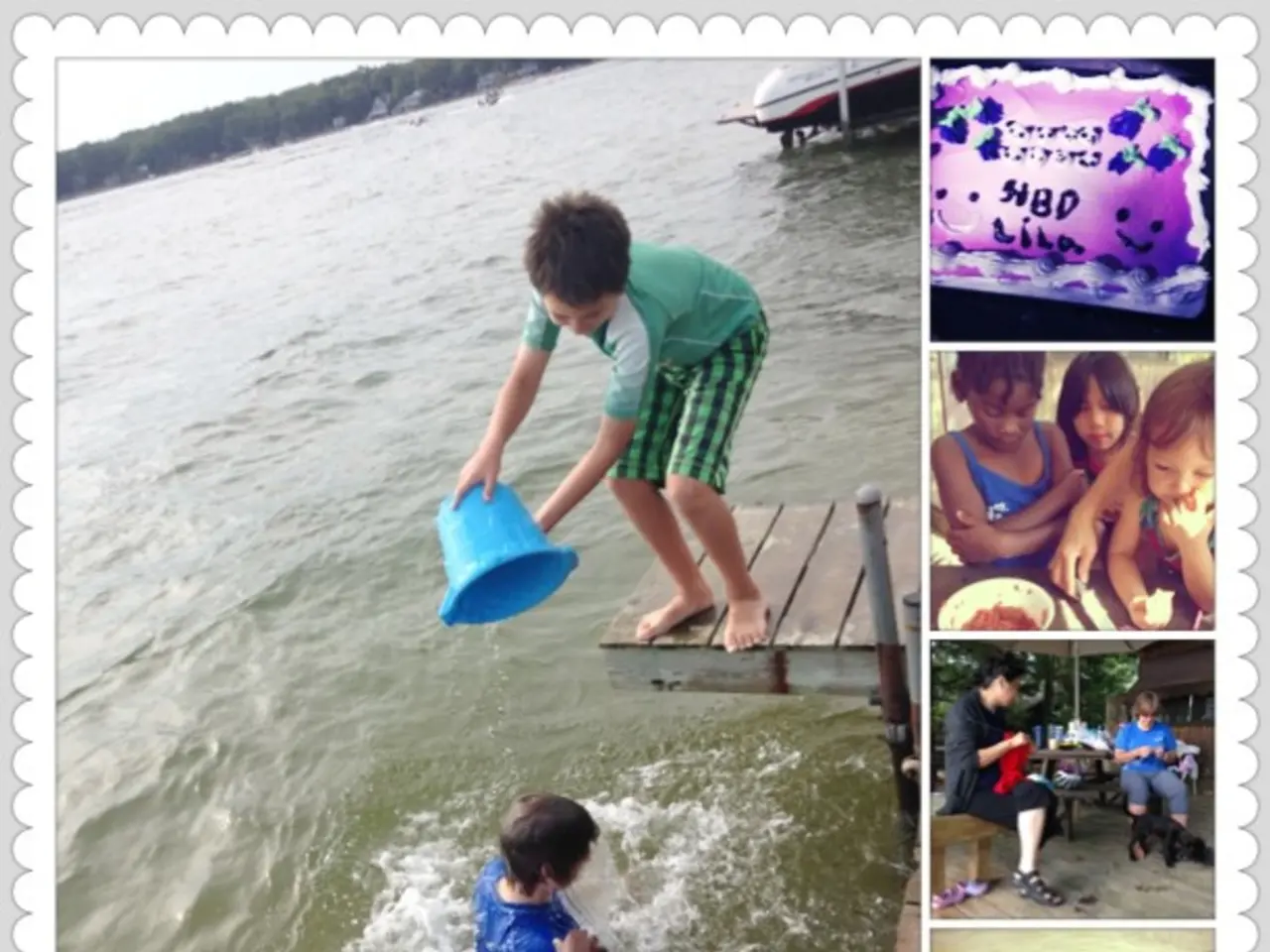Diverse Amusement Ideas for Child's Floating Fun
=====================================================================
Buoyancy, the force that makes objects float, is a fascinating concept that can be easily understood through a series of simple and engaging experiments. Here are some activities that will help kids learn about buoyancy, density, and displacement in a hands-on and interactive way.
The Floating Orange Experiment
By placing an unpeeled orange in water, kids can observe how air pockets in the peel increase buoyancy, causing the fruit to float. Peeling the orange and putting it back in water demonstrates how density and trapped air affect buoyancy, as the denser orange sinks.
Sink or Float Object Testing
Gather various household objects, such as toys, coins, and plastic bags, and have kids predict whether each will sink or float when placed gently in water. Observing and discussing the results will help kids learn about density and buoyancy.
Buoyancy Boats
Kids can build boats from popsicle sticks and waterproof glue, then test how many small weights (like pennies) the boats can carry before sinking. This activity explores buoyancy, displacement, and density through hands-on design and experimentation.
Lego Raft Design
This challenge explores weight distribution and buoyancy through Lego raft design challenges. Kids can build and test different raft designs to see which ones can carry the most weight.
Tinfoil Boat Challenge
In this activity, kids learn how surface area impacts buoyancy by building boats from tinfoil and testing their buoyancy. This challenge also introduces engineering principles.
Compare Liquids and Buoyancy
This experiment explores how objects behave in different liquids, including oil, water, and syrup. By observing how objects float or sink in various liquids, kids can learn about density and how it affects buoyancy.
The Soda Can Buoyancy Test
This activity introduces how liquid content and density affect buoyancy. By comparing regular and diet soda cans in water, kids can observe how the density of the soda inside the cans affects their buoyancy.
Water Temperature and Buoyancy Experiment
This experiment investigates the role of temperature in water density and buoyancy. By comparing the buoyancy of objects in cold and warm water, kids can learn how temperature affects buoyancy.
Density Column with Sinking Objects
In this experiment, small objects are dropped into a layered jar of water, honey, and oil to show how different densities affect buoyancy. By observing how the objects sink or float in each layer, kids can learn about density and how it affects buoyancy.
These experiments are not only fun but also educational, as they engage kids in prediction, observation, and iteration. They also introduce related concepts like density and displacement in an interactive way. So, grab some everyday materials and get ready to explore the fascinating world of buoyancy!
References:
[1] Floating Orange Experiment: https://www.sciencekids.co.nz/experiments/floating_orange.html [2] Floating Orange Experiment: https://www.sciencebob.com/experiments/floating-orange [3] Sink or Float Object Testing: https://www.sciencebob.com/experiments/sink-or-float [4] Buoyancy Boats: https://www.sciencebob.com/experiments/buoyancy-boats
- Learning about buoyancy doesn't have to be boring; kids can engage in fun printables and activities that teach them about this scientific concept.
- These hands-on experiments, such as the Floating Orange experiment, make learning about buoyancy, density, and displacement a playful experience for kids.
- The Sink or Float Object Testing activity encourages kids to use their knowledge of buoyancy to predict and observe the behavior of objects in water.
- The Lego Raft Design challenge is a fun STEM project that helps kids learn about weight distribution, buoyancy, and density through hands-on engineering.
- The Tinfoil Boat Challenge not only introduces kids to the engineering principles behind buoyancy but also fosters their creativity and problem-solving skills.
- Comparing Liquids and Buoyancy experiment allows kids to understand the effect of different liquids on buoyancy by observing how objects behave in various substances.
- The Soda Can Buoyancy Test introduces the concept of liquid density and its impact on buoyancy while keeping kids engaged in a practical, comparative experiment.
- The Water Temperature and Buoyancy Experiment helps kids learn about the role of temperature in water density and buoyancy, paving the way for a deeper understanding of this scientific concept.
- Density Column with Sinking Objects is an artful experiment that uses a layered jar to teach kids about density and its effect on buoyancy, helping them develop key skills in education, self-development, health-and-wellness, and fitness-and-exercise.




